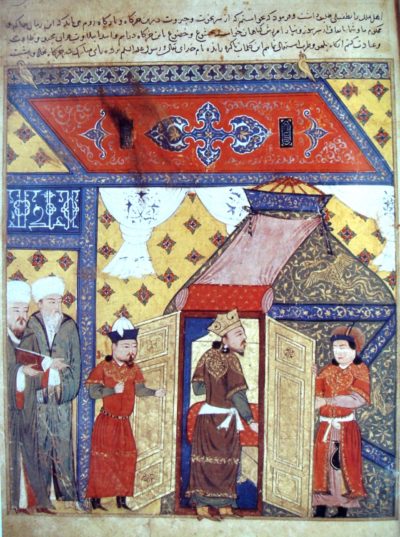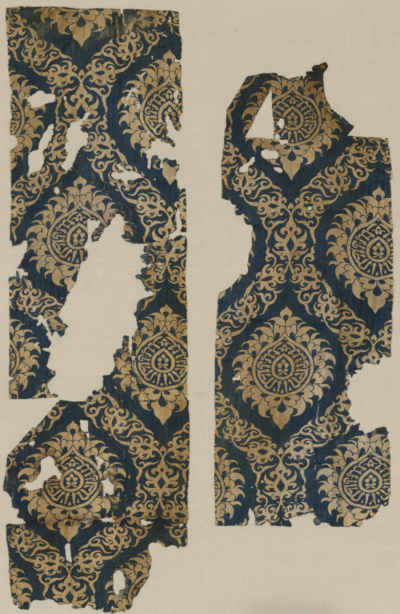Find it at the Met – Ilkhanid Dynasty Textiles
Persian textiles from the Ilkhanid dynasty are visual representations of a historical convergence between East and West Asia during the 13th and 14th centuries. This time of peace along the Silk Road yielded a golden epoch for decorative arts, especially in textiles that were easily portable for the era’s semi-nomadic rulers.

As history tells us, trade between East and West Asia predates the Mongol expansion. The Silk Road, connecting China to Europe, established trade between the two regions as early as the third century BC. With the arrival and subsequent westward invasions of Genghis Khan, however, a period known as “Mongol peace” allowed for undisturbed trade between the two sides of the continent. It was during this time that the Ilkhanid dynasty maintained Mongol sovereignty in Persia. The free movement of craftsmen and their goods across the continent reveals itself in the artistic union of Chinese Buddhist motifs with Perso-Islamic ones. This unification was further solidified when the Ilkhanids converted to Islam. They centralized their power in northwest Iran, a location already renowned for its textiles. Once ignited, the renaissance in decorative arts and architecture spread westward to Anatolia, eastward to China, and southward to India.
Textiles were especially influenced because they are easily transported, an important aspect in consideration of the Mongol’s nomadic lifestyle. Even though the Ilkhanid dynasty built impressive permanent structures and began to settle into and adopt habits of the sedentary civilizations they overtook, Khans continued to hold court in intricate tents that were ornately decorated with the most brilliant handicrafts. The fragment pictured above is one of such textiles. The blue and gold remnant illustrates a pattern of floral scrolls surrounding a lotus blossom. In Chinese iconography, the locust represents purity and beauty. Persian-styled calligraphy and arabesques, however, enclose the flower.

Some of Orley Shabahang’s signature carpets take inspiration from Persian textiles from the Ilkhanid dynasty. This Khotan design dates back to the 14th century, a flourishing time for the region’s textiles. These rugs come from nomadic Persian Buddhists who inhabited an oasis between the Taklamakan Desert and the Kunlun Mountains. Khotan weavers often manifested Chinese influence in their details while adhering to a Persian framework. The repetition of Chinese lotus flowers here sits within a quintessential Persian lattice formation.
Visit Orley Shabahang’s website to see more carpets inspired by Persian textiles from the Ilkhanid dynasty.

